 Melissa Anderson
Melissa Anderson
Bigamy, unwed mothers, hitchhiking psychopaths: a retrospective celebrates the work of the Hollywood director and actress.
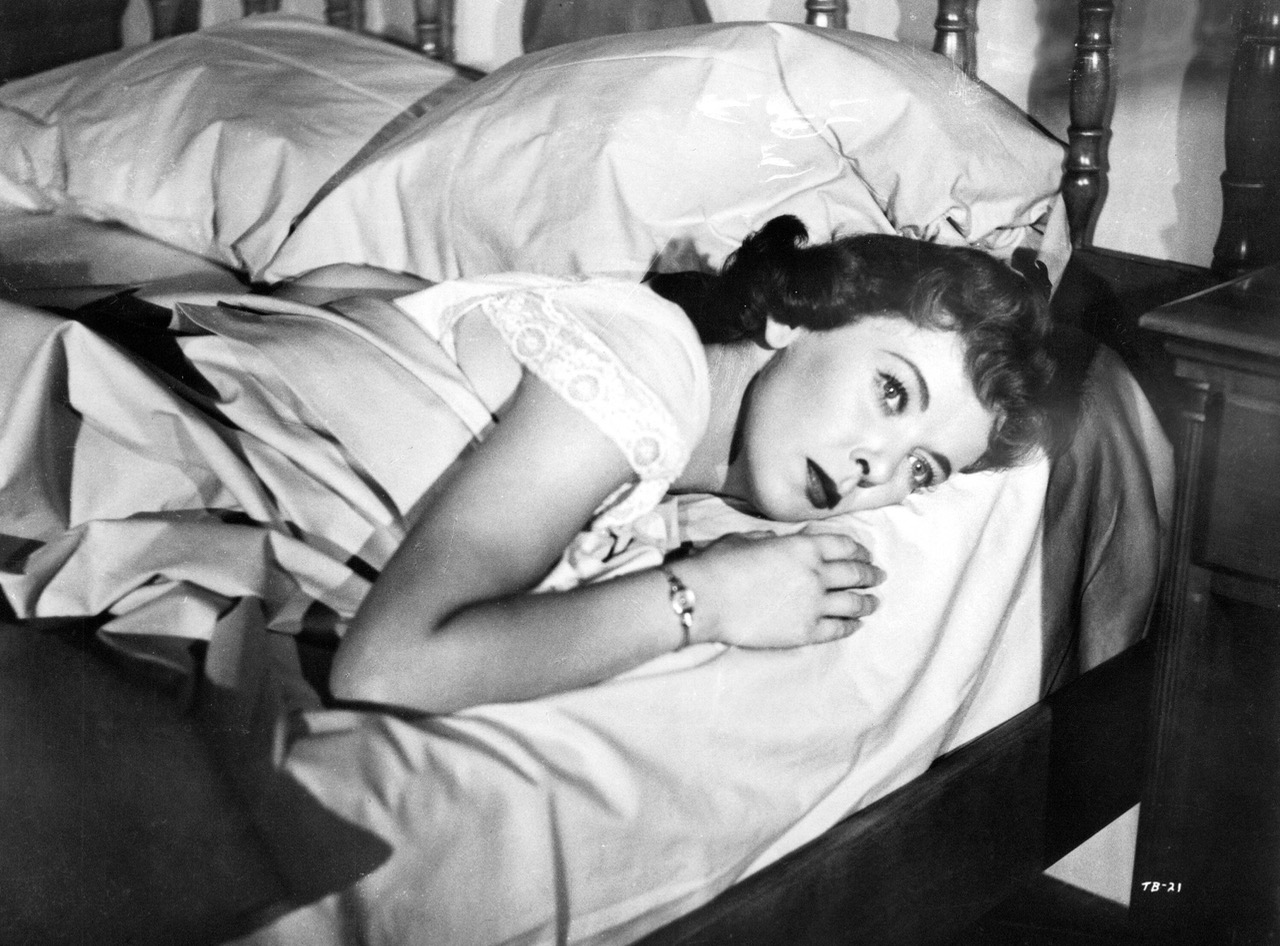
Ida Lupino as Phyllis in The Bigamist. Image courtesy The Filmakers Inc. / Photofest. © The Filmakers Inc.
“Ida Lupino 100,” Film Forum, 209 West Houston Street, New York City, November 9–22, 2018
• • •
Early in her career, the husky-voiced Ida Lupino, one of film noir’s greatest, most versatile actresses, was known by a few different sobriquets. Born in 1918 in London to a well-known family of thespians, she was dubbed “the English Jean Harlow” when she arrived in Los Angeles in 1933. By the early ’40s, having acted opposite Humphrey Bogart in Raoul Walsh’s They Drive by Night (1940) and High Sierra (1941)—acclaimed performances that nevertheless failed to elevate her to screen-legend status—she joked that she was “the poor man’s Bette Davis.” But by the end of that decade, when Lupino began directing films, the only woman then doing so in Hollywood, she gave herself her most enduring nickname: Mother.
“I love being called Mother,” Lupino said of her helmer’s persona in 1967, seventeen years after she became the second woman (after Dorothy Arzner) to be admitted to the Directors Guild. “I would never shout orders at anyone. I hate women who order men around, professionally or personally. I wouldn’t dare do that with my old man . . . and I don’t do it with guys on the set. I say, ‘Darlings, Mother has a problem. I’d love to do this. Can you do it? It sounds kooky but I want to do it.’ And they do it.”
Adopting the cognomen, which mixes authority (but not autocracy) with warmth (not to be confused with meekness) and chases it with high camp, served as a canny strategy for Lupino, who would direct seven movies from 1949 to 1966—all of which will screen at Film Forum as part of a series, running November 9–22, celebrating her centennial. (From 1956 to 1968, she also directed scores of television episodes, for shows including The Fugitive, The Twilight Zone, and Gilligan’s Island; on a hiatus from movie acting from 1956 to 1969, Lupino appeared in numerous TV series during those years as well. She retired in 1978 and died in 1995.)
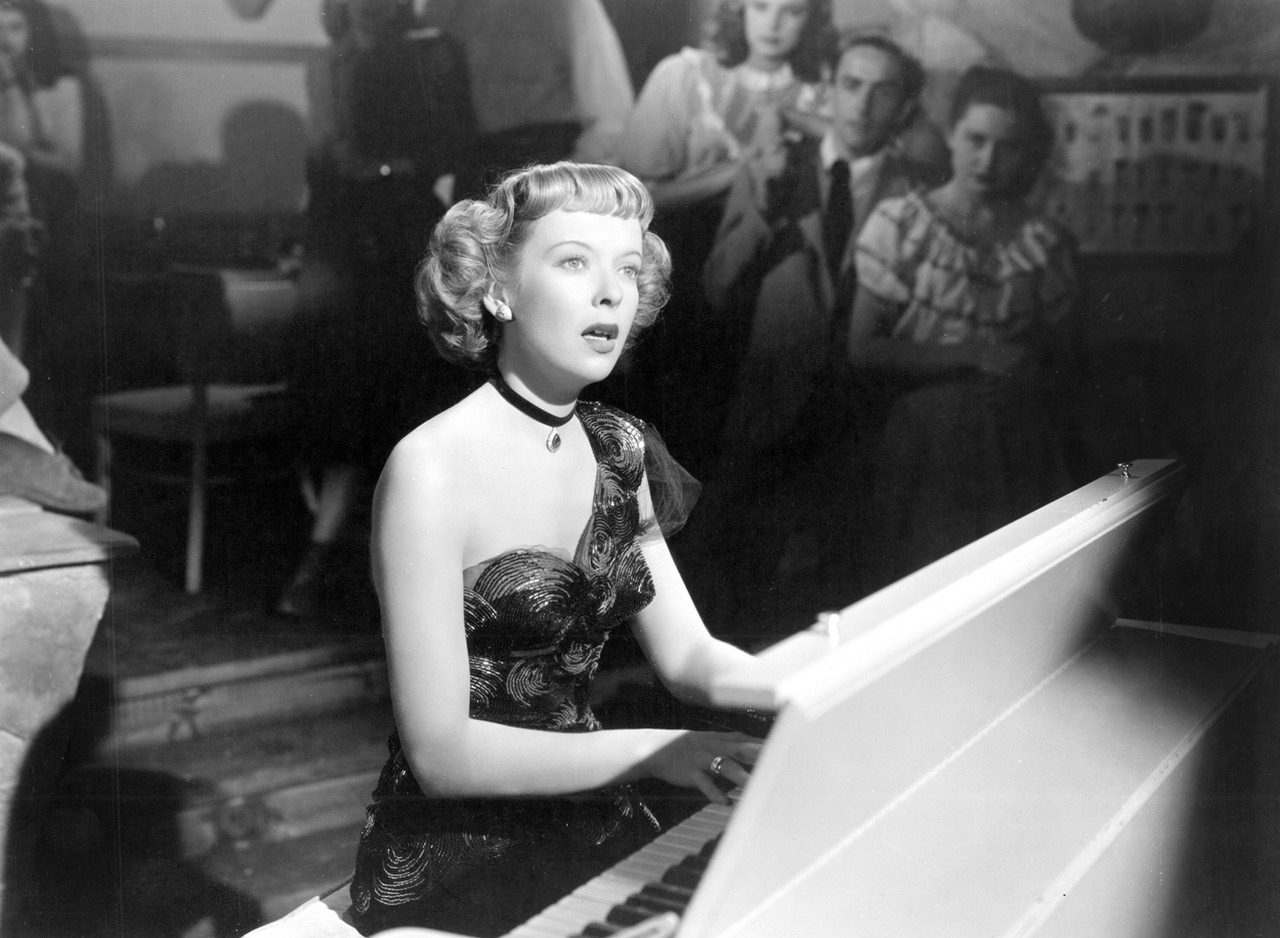
Ida Lupino as Lily in Road House. Image courtesy 20th Century Fox / Photofest. © 20th Century Fox.
In addition to the films she directed, “Ida Lupino 100” also features her greatest screen roles. Two of my favorites: as tavern entertainer Lily Stevens in Jean Negulesco’s Road House (1948), Lupino rests a still-smoldering cigarette on top of the piano she plays while giving a near spoken-word rendition of the down-tempo “One for My Baby (And One More for the Road),” her voice a seductive rasp deepened by tobacco and world-weariness (“She reminds me of the first woman that ever slapped my face,” an admiring male patron remarks before Lily begins her number). And as Mary—a blind woman determined to protect her kid brother, who’s wanted for murder—in Nicholas Ray’s On Dangerous Ground (1951), Lupino anneals her trusting, vulnerable character with unyielding mettle.
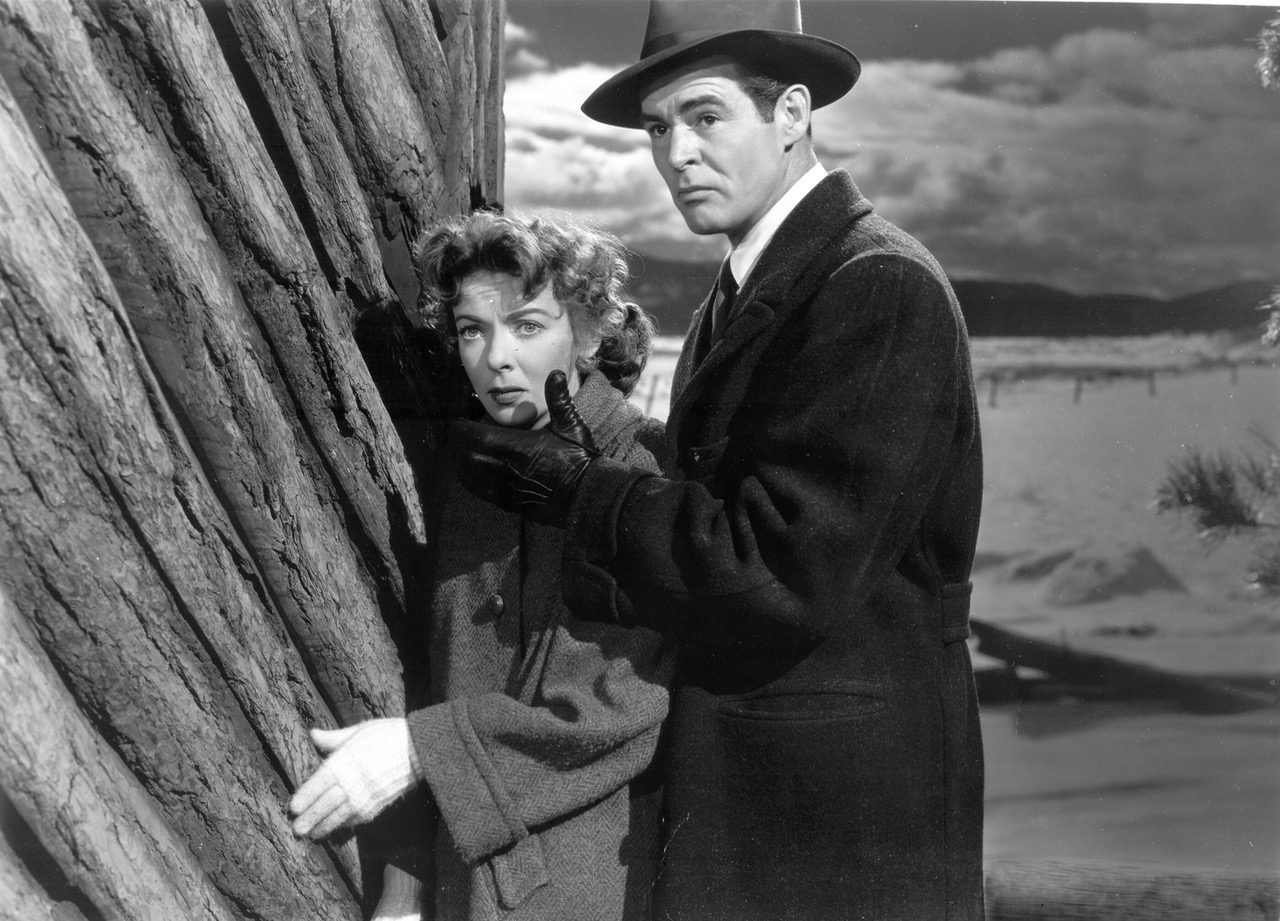
Ida Lupino as Mary in On Dangerous Ground. Image courtesy Film Forum / Photofest.
The highlight of the retrospective, though, is the film in which Lupino appeared on both sides of the camera, becoming the first woman in the post-silent era to direct herself: The Bigamist (1953). The movie was Lupino’s final directorial effort for the Filmakers, the idiosyncratically spelled production company she formed with Malvin Wald and her second husband, Collier Young, shortly after the release of Not Wanted (1949). That project, about the highly taboo subject of unwed mothers, marked the unofficial directing debut of Lupino (who cowrote the screenplay); she took over helming duties from Elmer Clifton, who had a heart attack shortly before filming began—and who retained sole director’s credit.
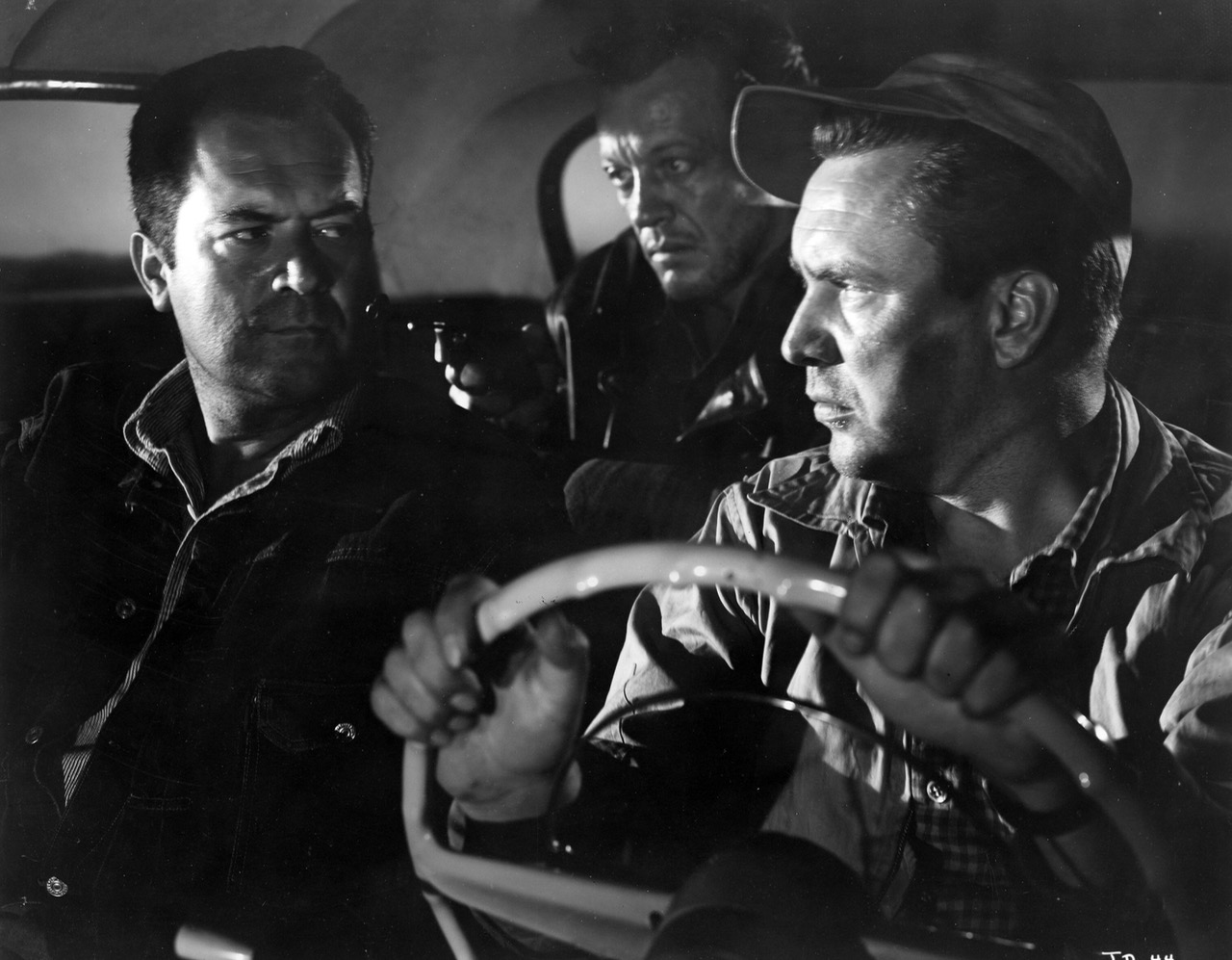
Frank Lovejoy as Gilbert, Edmond O’Brien as Roy, and William Talman as Emmett in The Hitch-Hiker. © RKO Radio Pictures.
The movies Lupino directed for Filmakers included socially conscious melodramas such as Outrage (1950), an unblinking account of rape and the cruelties of the legal system, and lean noirs like The Hitch-Hiker (1953), about two buddies headed to a fishing trip in Mexico who unknowingly offer a lift to a psychopath. The Bigamist, remarkably complex and deeply sympathetic to all three of its protagonists, is a hybrid of both genres—call it a melo-noir.
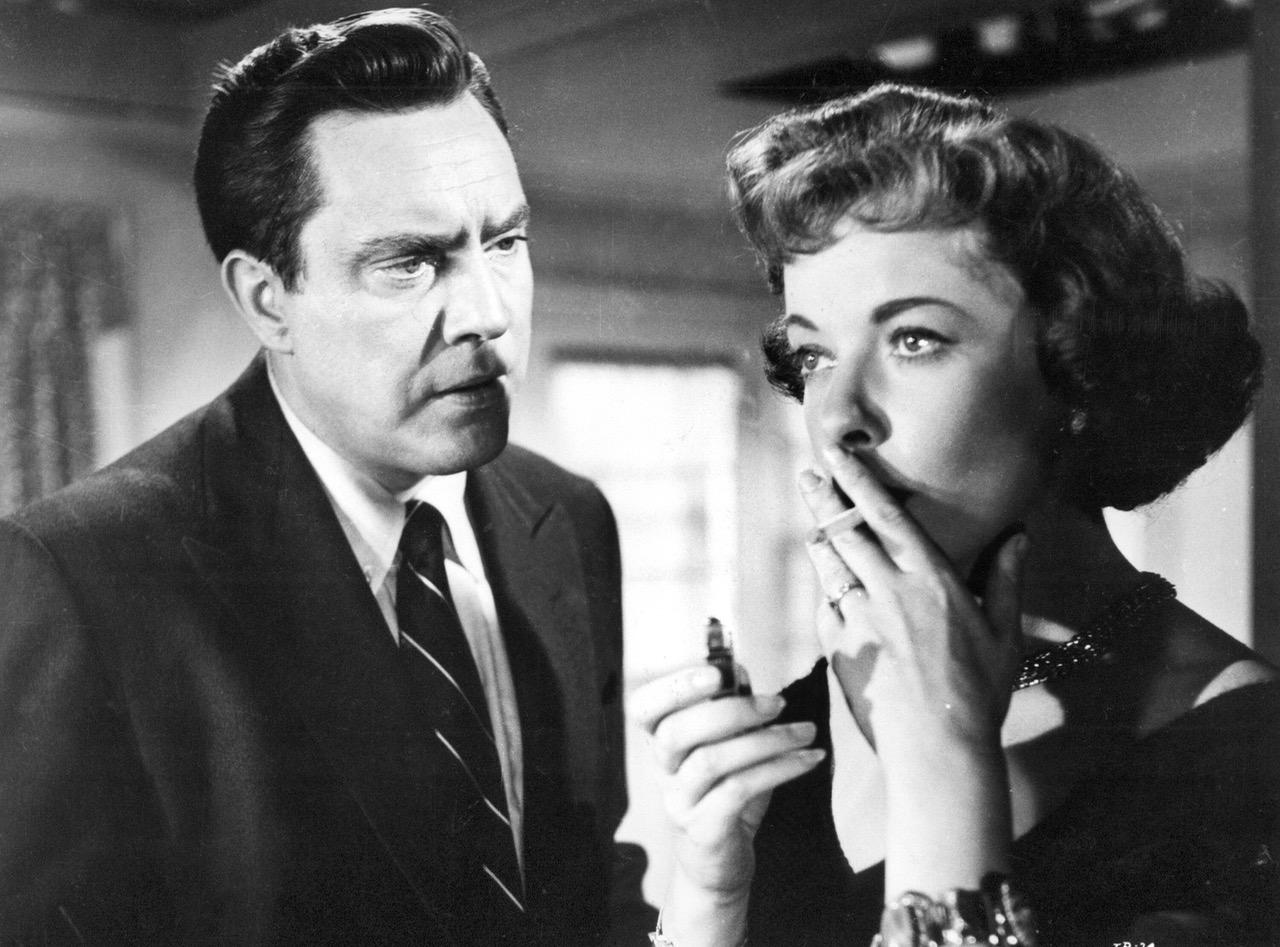
Edmond O’Brien as Harry and Ida Lupino as Phyllis in The Bigamist. Image courtesy The Filmakers Inc. / Photofest. © The Filmakers Inc.
The film opens in San Francisco, the home base of married couple and business partners Harry (Edmond O’Brien, one of the stars of The Hitch-Hiker) and Eve (Joan Fontaine). They are discussing their hopes to adopt in the office of an agency employee, Mr. Jordan (Edmund Gwenn, whose career-defining role as Kris Kringle in George Seaton’s Miracle on 34th Street from 1947 is a running in-joke here). Though the spouses, wed for eight years, seem happy and appear to be fine candidates for parenthood, Jordan has suspicions about Harry. That mistrust is borne out early in the film when the agent tracks down the aspiring father in Los Angeles, where Harry often travels for work—and where he’s now sharing a bungalow with another wife and their infant son.
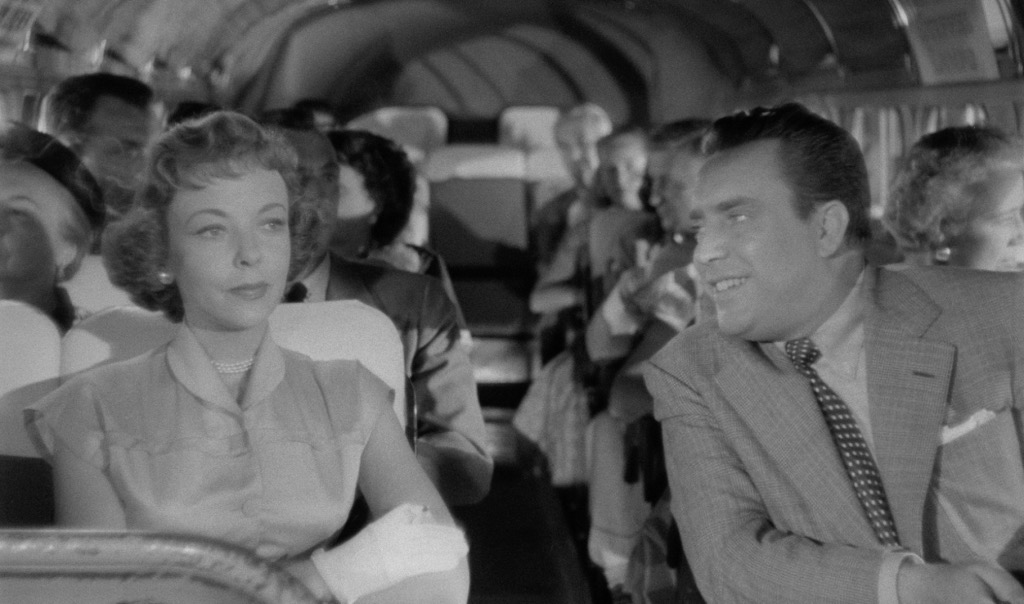
Ida Lupino as Phyllis and Edmond O’Brien as Harry in The Bigamist. Image courtesy The Filmakers Inc. / Photofest. © The Filmakers Inc.
Confronted by Jordan, Harry recounts the circumstances that led to his “insane double life,” setting in motion a flashback as sinuous as those found in the paradigmatic noirs Double Indemnity (1944) and Mildred Pierce (1945). Feeling lonely and alienated from Eve while on yet another company trip to LA—a city brought vividly to life via the film’s on-location shots of Bunker Hill and MacArthur Park—Harry meets Phyllis (Lupino) on a homes-of-the-stars bus tour. He chats her up; she at first rebuffs him with this retort, delivered with Lupino’s signature tough-broad hauteur, to his solicitous query about why she’s on the touristy excursion: “I’m just crazy about bus rides. Gives me a chance to get off my feet.”
But Phyllis soon softens, inviting Harry to the Chinese restaurant—“Early American Chinese. You’re gonna love it!”—where she’s a waitress and notably the only Caucasian employee. She shares an easy camaraderie with her Asian coworkers, who are presented with none of the baleful stereotypes too common in Hollywood then—and still deployed now. (Another salient detail about Phyllis’s workplace: one of the patrons at the mostly empty eatery is a cameoing Collier Young, who wrote The Bigamist’s screenplay. In a bit of marital intrigue that further heightens that onscreen, Collier was, as of 1951, divorced from Lupino and, as of ’52, married to Fontaine.)
As Harry and Phyllis fall in love, she never fully sheds her carapace, insisting that he never tell her anything about his past. He feels needed by her, especially after she learns she’s pregnant—a dependency he fears that Eve, a confident executive, no longer exhibits toward him. The Bigamist may be told through Harry’s point of view, but he is by no means the movie’s hero. Harry, like Eve and Phyllis, is something more profound than that: a person undone by desolation. The film ends in a courtroom, but judgment is suspended.
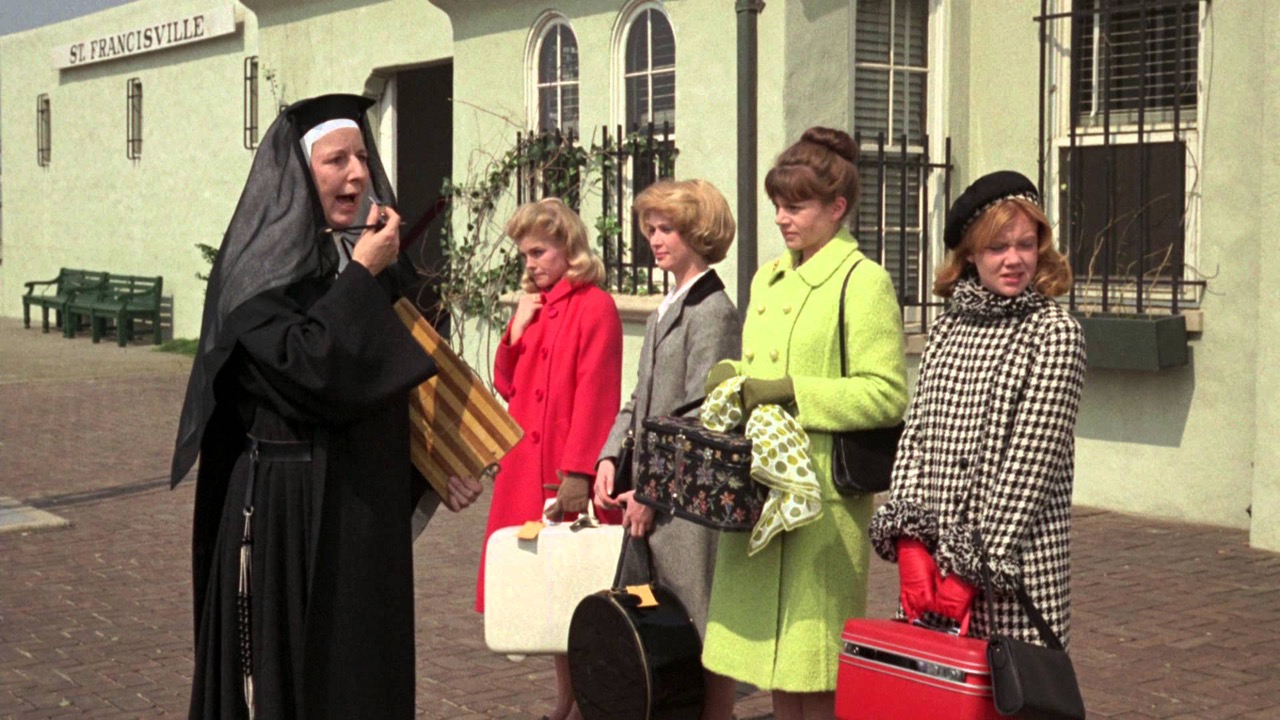
The Trouble with Angels. Image courtesy Film Forum.
As for my own judgment, I wish that Lupino’s film-directing career had ended with The Bigamist. Sadly, her last movie, the manic, exhausting Catholic-schoolgirl romp The Trouble with Angels (1966), is also her worst. Despite this blunder, I’d still like to propose this programming suggestion to movie houses around the globe for the remainder of 2018: Make every day Mother’s day.
Melissa Anderson is the film editor of 4Columns.